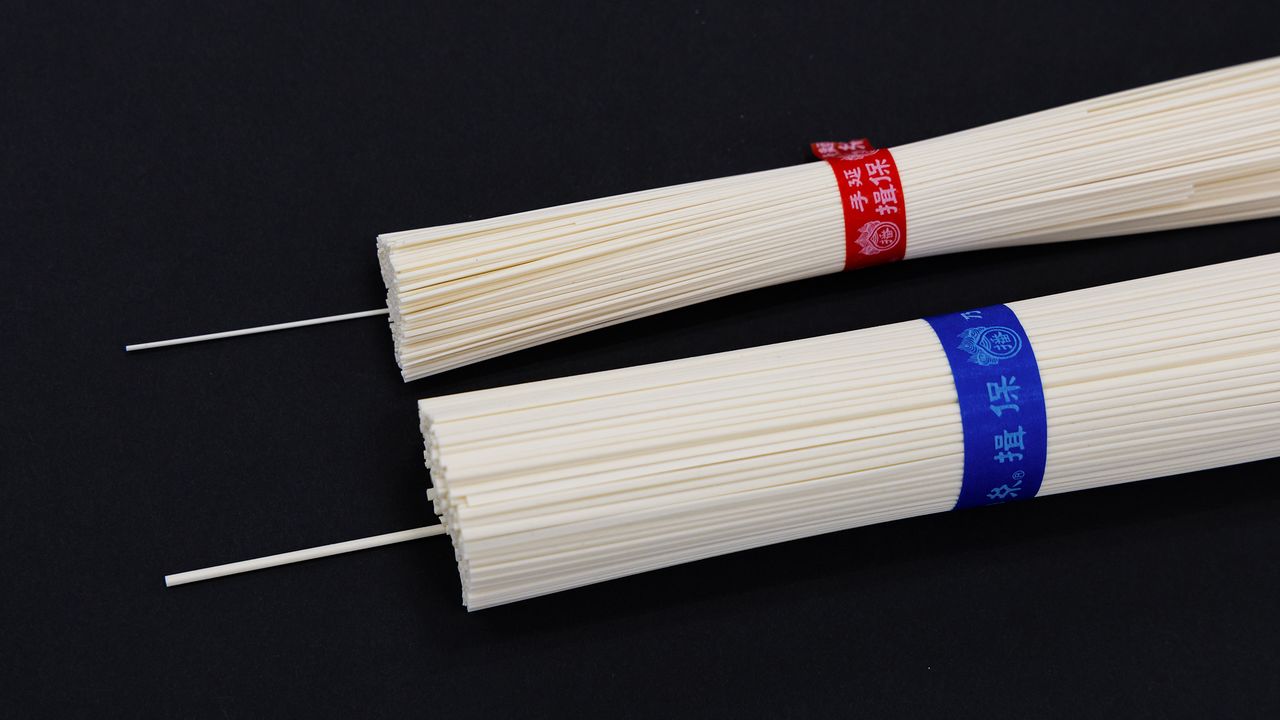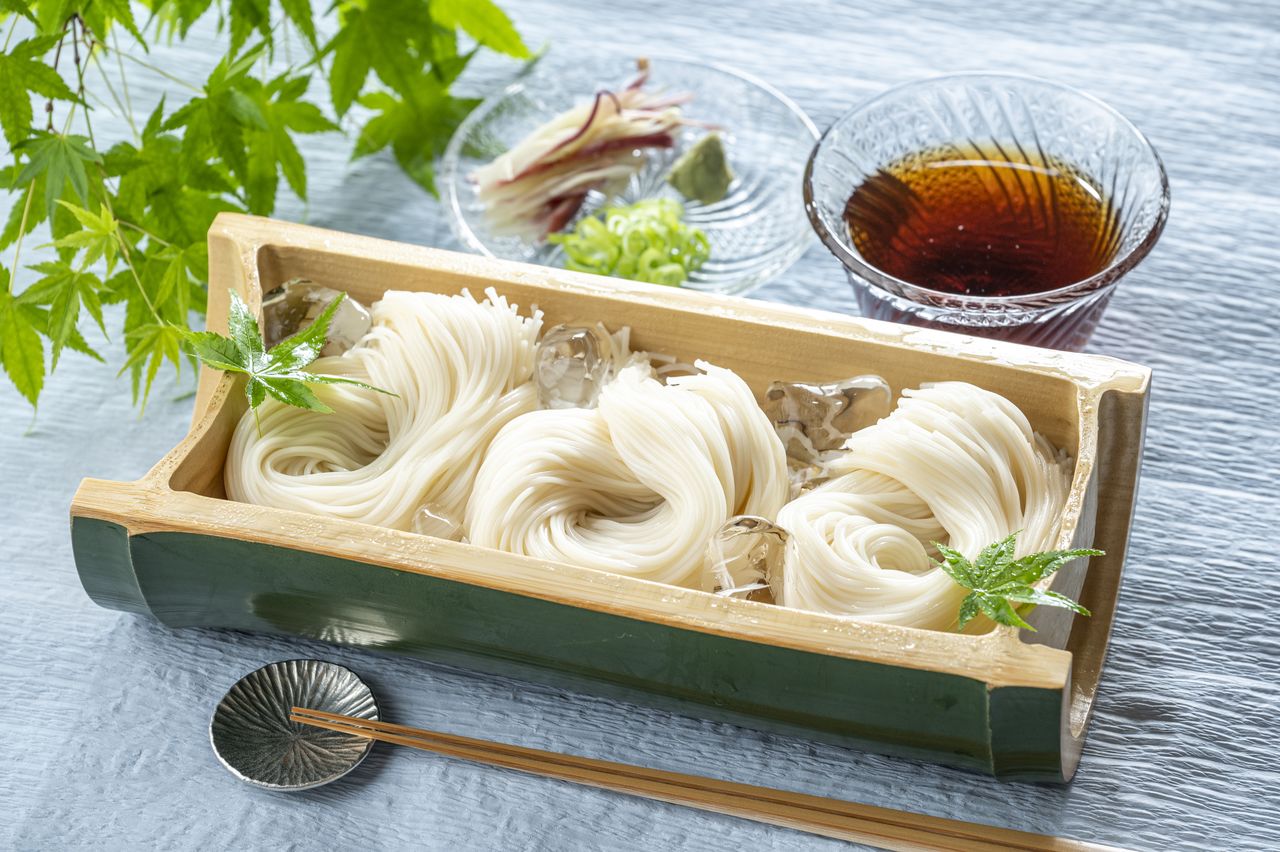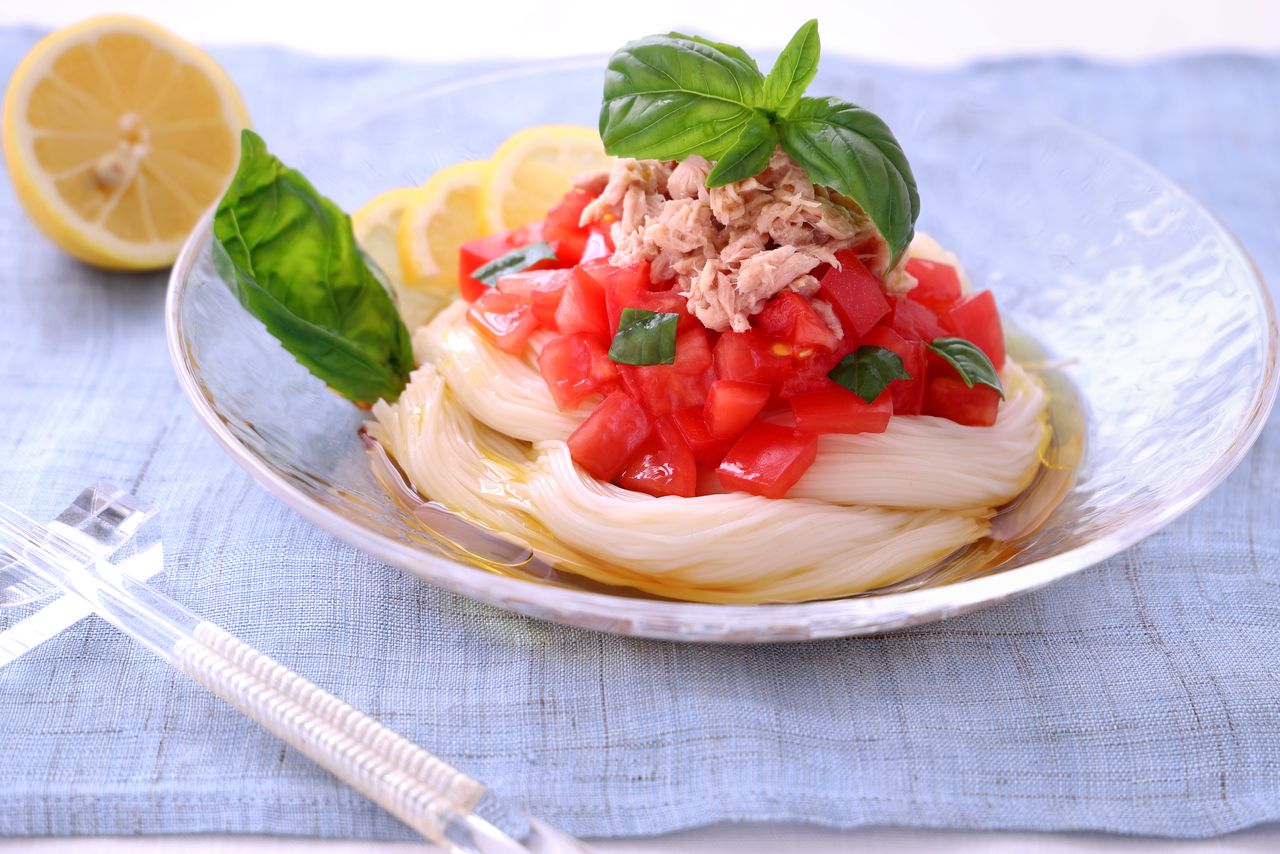
“Sōmen” and “Hiyamugi”: Defining Japanese Summer Noodles
Food and Drink Lifestyle- English
- 日本語
- 简体字
- 繁體字
- Français
- Español
- العربية
- Русский
Sōmen and hiyamugi are both thinly shaped noodles made basically from flour and salt, and they both make for a refreshing summer meal. With the same ingredients, there is no great difference in taste, but their different names are based on their thickness.
Machine-Made Dry Noodles by Thickness
| Less than 1.3mm in diameter | Sōmen |
| 1.3mm to 1.69mm in diameter | Hiyamugi |
| 1.7mm and over in diameter | Udon |
| More than 4.5mm in width and less than 2mm in thickness | Kishimen |
By Japanese Agricultural Standards, sōmen is defined as being less than 1.3 millimeters in diameter and hiyamugi as being between 1.3 millimeters and less than 1.7 millimeters. In the top image of this article, the noodles with the red band are sōmen and, below them, the ones with the blue band, hiyamugi. It may only be subtle, but the sōmen are thinner.
The standard type of sōmen from the renowned high-grade brand Ibonoito Sōmen, produced by the Hyōgo Prefecture Tenobe Sōmen Cooperative Association, measures between 0.70 and 0.90 millimeters in diameter. The highest quality type, usually reserved for gift-giving, is approximately 0.55 to 0.60 millimeters. At less than half the defined standard thickness, they are an example of incredible artisanship.

Sōmen served in a bamboo dish with a dipping sauce. (© Pixta)
Both sōmen and hiyamugi are made by mixing and kneading wheat flour, salt, and water, but in the case of sōmen, the dough is twisted and stretched to make the noodles thinner. The name hiyamugi originates from kirimugi (literally, “cut wheat”), a type of noodle made by flattening and stretching dough in the same way as udon and then finely cut. When eaten in hot broth, they are referred to as atsumugi (“hot wheat”), while in cold broth, they are hiyamugi (“chilled wheat”).

Sōmen with tuna and tomato. (© Pixta)
(Translated from Japanese. Banner photo: A comparison of the thickness between sōmen and hiyamugi noodles. © Nippon.com.)
